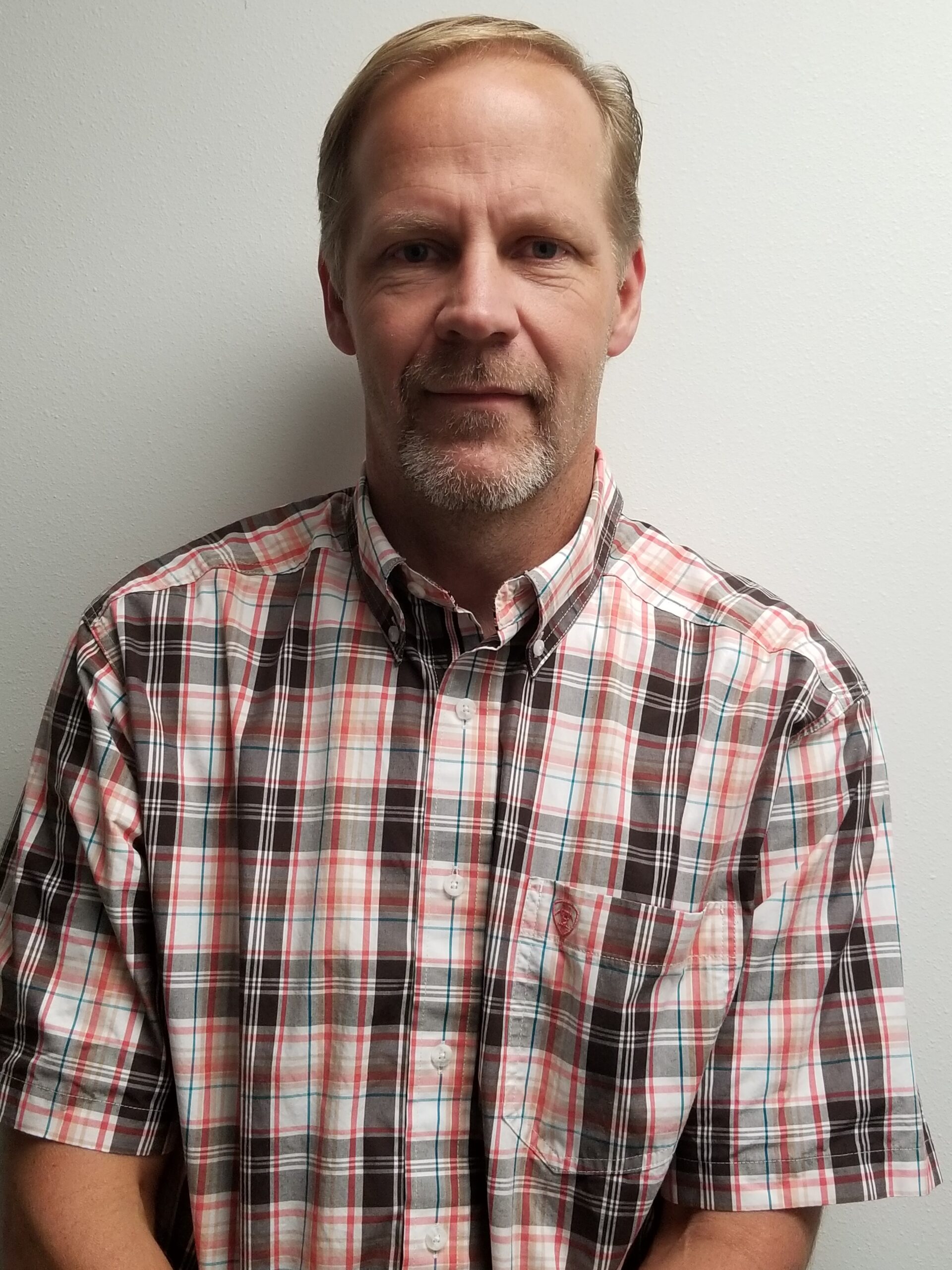Apply now to join our next cohort of Community Science Fellows and Community Leads!

Stream monitoring in Norwalk by bridge near bike trail, library and tractor pull and park area (Credit: Jen Schmitz)
The PL566 Dam flood shadow covers 2/3rd of the Village of Norwalk and there is currently no distinct flood emergency action plan in place. To solve the problem, there’s a need to develop a flood emergency action plan that is community centric and inclusive to older residents and the non-English speaking and Amish communities. By solving the problem, the Village of Norwalk will gain (1) flood awareness and emergency response clarity and (2) economic (i.e., decrease in physical injuries) and social benefits (i.e., increase community resilience and emotional security). The major result this project will deliver is clarity on response and action from residents and community leaders and to recommend for adoption of statewide shoreline zoning ordinance.

The Village of Norwalk is located in Monroe County, Southwest Wisconsin, specifically, on the northern edge of the Kickapoo River Valley. The village is within a driftless area (areas identified to never been covered by ice during the last ice age and primarily has a Karst topography); this is characterized by caves and cave systems, disappearing streams, blind valleys, underground streams, sinkholes, springs, and cold-water streams.
The Village is primarily a rural residential community with a diverse population of approximately 600 residents. The Village has many outdoor recreational opportunities such as the Elroy Sparta State Bike Trail that goes through the Village, parks for camping, snowmobiling, and trout fishing on the Moore Creek. An interesting accolade is that the Village hosts a Tractor Pull every year!
The groups that are represented on the project River to Ridge Disaster Resilience Group, Village of Norwalk, and Monroe County Land Conservation Department. The key community priority/goal is to create an emergency action plan and warning system to protect the community from future flood events. All members of the project have history of working on flooding issues through their occupation, local government, and/or grassroots organizations. A major milestone that some members of the project was involved with was Monroe County receiving a grant to upgrade and improve the flood warning system at the PL566 structure. Continuing, the grant is a product of the Monroe County Climate Change Task Force objective along with working with the Village President over the last couple years to improve the Village resiliency and sustainability.
To advance the priority of protecting the Village from future flooding events, the project aims to (1) build an awareness campaign, (2) connect community leaders and organizations to the issues, and (3) put an action plan in place through creating an emergency action plan and warning system. The key stakeholders identified are the Village government and residents, fire department, National Weather Service, the towns of Ridgeville and Sheldon, Monroe County Emergency Management and Land Conservation, Natural Resources Conservation Service, Wisconsin Department of Natural Resources, private and public owners along Moore Creek, energy company: Excel, and telephone providers in the area. The major deliverables of this project are the emergency action plan document and warning system. The document will be shared via local government websites, one page summary in public spaces, and media. The Village of Norwalk will benefit as the project will provide the community with a safety protocol during and after an emergency flood event which in turn can reduce injuries/deaths. Given the outcome, the community will have a greater awareness for flood disasters and have a clarity on response.
After the Scope and Match phase, it is projected that the Solve phase will take 6-8 months.

Levi Helgren
Levi is a native, resident, and community leader of the Village of Norwalk. After graduating from Brookwood High School in 2000, he attended Western Wisconsin Technical College in LaCrosse for a year. The following fall he transferred to the University of Wisconsin-Superior, where he received his undergraduate degree in Communications (2006). In 2009, he and his wife, Jesica, relocated back to Norwalk and have been here ever since. He has four children (Austin – 15; Isabella – 13; Allison-8; and Isaac-6) who basically only known Norwalk as home. He has been working for an organic dairy cooperative in the area since 2010, a company that has a focus on sustainability. In 2018, he was elected as a trustee for the Village of Norwalk board, and the following year was elected to be the Village President – in which he is currently serving. In addition, he serves as the Vice President of the Norwalk area fire district board and in 2020 became President of the Norwalk Lions Club.

Bob Micheel
Bob is the Monroe County Land Conservation Department (LCD)–Director, where he previously served as a Soil & Water Conservationist in Sparta, Wisconsin, since 1989. He has a Bachelor of Science Degree in Resource Management and Soil Science from UW-Stevens Point. Over the course of 30 plus years he has served on many federal, state, and local committees influencing conservation policy. Program highlights include: the stream restoration/fishing easement program, phosphorous trading with municipalities, and development of the Climate Change Task Force along with creating the first land use planner position in Monroe County. Currently serves as the Wisconsin Land & Water Association – President. Bob grew up in a small community called the Arches, in Winona County MN.

Jen Schmitz
Jen is a Monroe County native and active community leader in various organizations and working groups. At the end of 2019, she ran for Monroe County Board to help Monroe County plan for long term sustainability that would protect the people, land, and water. She is an active contributor in the Climate Change Task Force of Monroe County. She is also an active voice with River to Ridge Disaster Resilience group. She firmly believes that by working together we are smarter and better equipped to protect ourselves and our precious Earth. She saw an opportunity to work with the village of Norwalk to expand their rain and stream monitoring system so that the residents of Norwalk and neighboring villages can better respond to flash flooding events that are likely to cause damage and jeopardize residents’ safety. Norwalk is home to her neighbors, coworkers, and important local businesses. She believes with the input of scientists and other thought-leaders we can help Norwalk create a plan for community resilience in 2022 and beyond!

Patrick Marchman
Patrick is Principal at KM Sustainability and Associate Director, Climate and Sustainability at InnSure, bringing a climate adaptation and resilience planning lens to projects across the United States, Canada and internationally and advancing the insurance industry’s response to climate change. He has worked as a planner for over 18 years, beginning in environmental planning managing environmental impact assessments for projects ranging from minor building upgrades to multi-billion-dollar energy projects. Patrick moved into hazard mitigation and disaster risk reduction planning while working with the U.S. Federal Emergency Management Agency, supporting local, state and national planning efforts and developing the agency’s first climate adaptation toolkit. After a four-year stint managing the environment and real estate programs for the U.S. Federal Highway Administration’s Michigan Division, he moved to the private sector, supporting climate adaptation and sustainability strategy for public and private sector clients in both the United States and Australia.
Patrick is a member of the American Institute of Certified Planners, and earned the Certified Environmental Planner advanced specialty certification in 2016. He also holds a certification in Sustainability and Climate Risk from the Global Association of Risk Professionals. Patrick has also served in leadership roles in several professional and non-profit organizations, including currently on the boards of the Climigration Network and the Natural Hazards Mitigation Association, and has a commitment to leading the development and real-world application of new areas of focus within climate adaptation.

Duyen Lam
Duyen earned her B.S. in Environmental Engineering from Louisiana State University and is currently a PhD student in Water Resource Engineering at Marquette University. Her research focuses on assessing the impact of anthropogenic base cations on green stormwater infrastructure and local water ways. She is excited to be part of the Thriving Earth Exchange program and get the opportunity to learn and grow with her community partners and cohort. Outside of academia, Duyen loves to cook and watch movies with her friends!
Monroe Country Land Conservatorship Department:
The mission of the Monroe County Land Conservation Department is to manage, conserve and protect our natural resources. The department will facilitate wise, sustainable land use and outdoor recreation through information and education while supporting technical and financial assistance to landowners of Monroe County and encourage all residents of Monroe County to be stewards of our natural resources keeping in mind the generations to follow.
River to Ridge Disaster Resilience
River 2 Ridge Disaster Resilience Group (R2RDR) is a non-profit, 501 (c) 3 organization made up of a volunteer committee of community partners including local businesses, non-profit organizations, churches and other religious organizations, economic development, and emergency management. R2RDR provides resources and connections for people in Crawford, La Crosse, Monroe, and Vernon counties who are working to recover from a natural disaster or community crisis.
(c) 2024 Thriving Earth Exchange